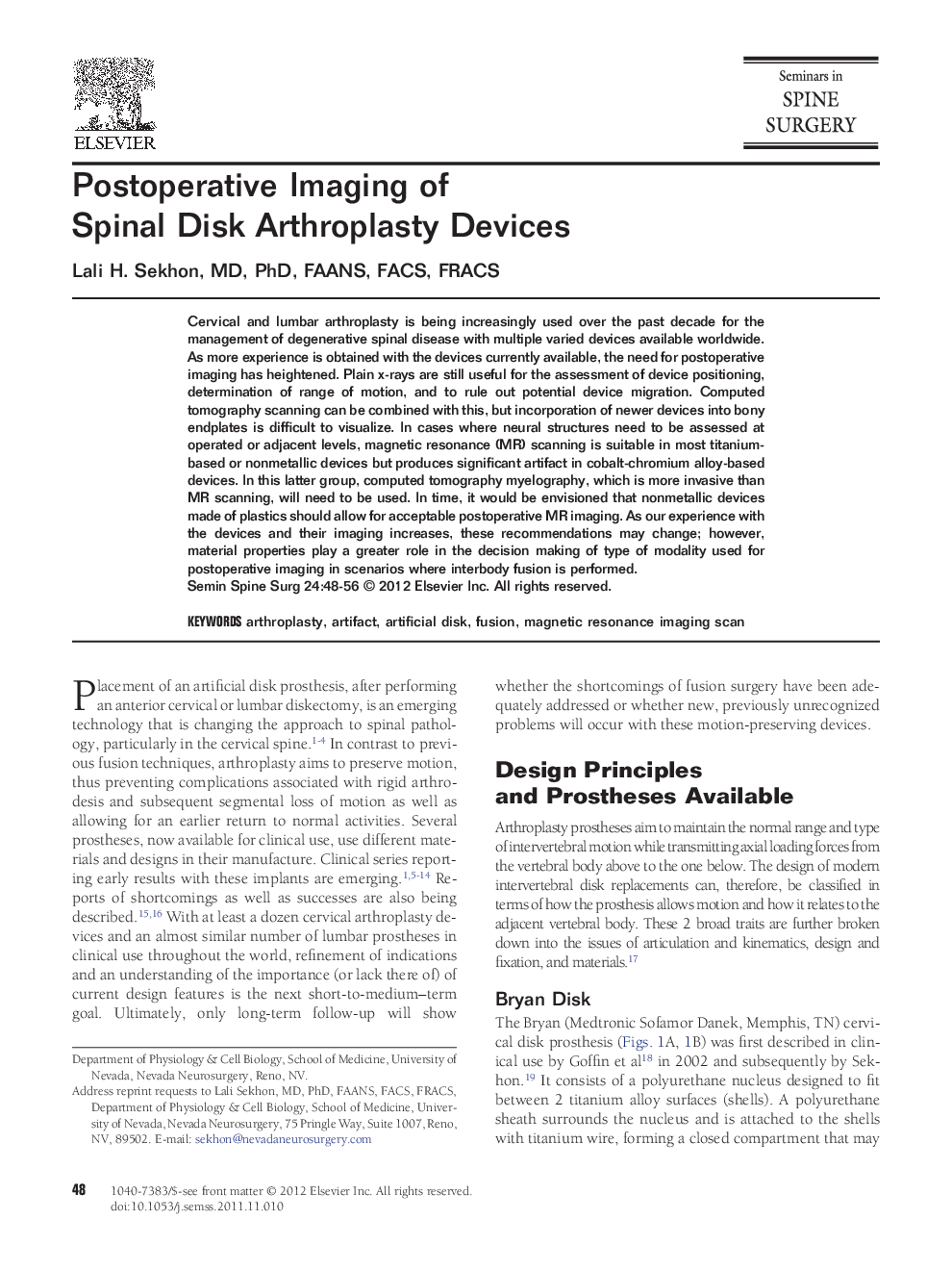| Article ID | Journal | Published Year | Pages | File Type |
|---|---|---|---|---|
| 4094894 | Seminars in Spine Surgery | 2012 | 9 Pages |
Cervical and lumbar arthroplasty is being increasingly used over the past decade for the management of degenerative spinal disease with multiple varied devices available worldwide. As more experience is obtained with the devices currently available, the need for postoperative imaging has heightened. Plain x-rays are still useful for the assessment of device positioning, determination of range of motion, and to rule out potential device migration. Computed tomography scanning can be combined with this, but incorporation of newer devices into bony endplates is difficult to visualize. In cases where neural structures need to be assessed at operated or adjacent levels, magnetic resonance (MR) scanning is suitable in most titanium-based or nonmetallic devices but produces significant artifact in cobalt-chromium alloy-based devices. In this latter group, computed tomography myelography, which is more invasive than MR scanning, will need to be used. In time, it would be envisioned that nonmetallic devices made of plastics should allow for acceptable postoperative MR imaging. As our experience with the devices and their imaging increases, these recommendations may change; however, material properties play a greater role in the decision making of type of modality used for postoperative imaging in scenarios where interbody fusion is performed.
